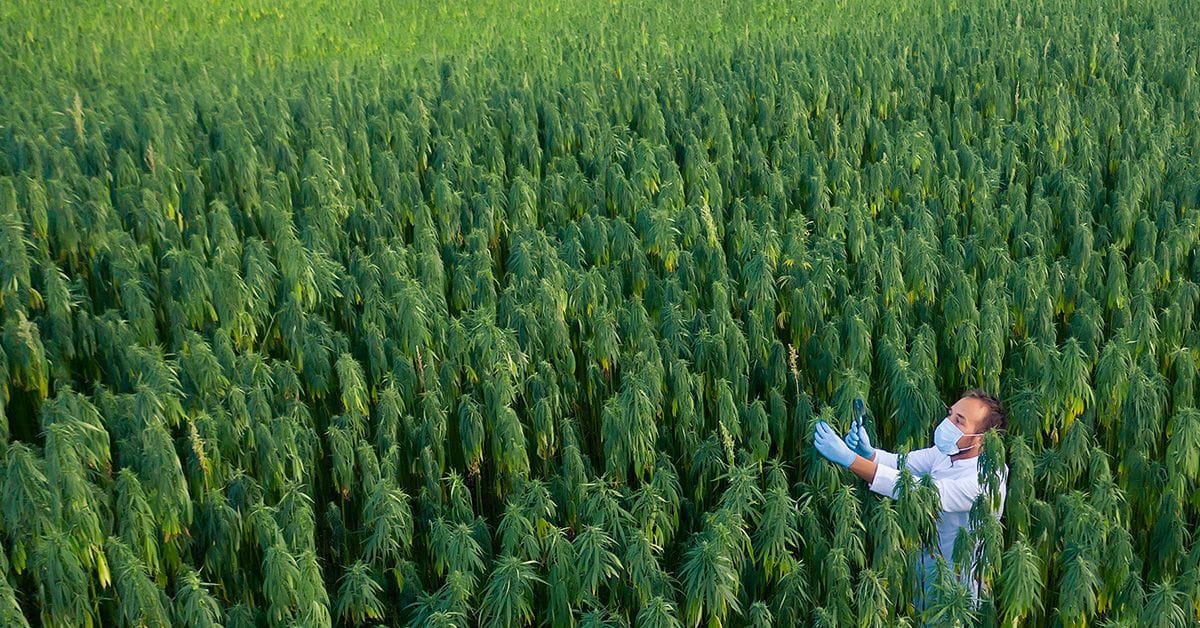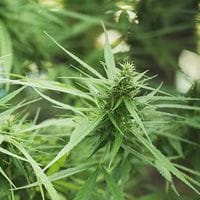On the back of much research into its medical and nutritional benefits, legal cannabis production is rapidly expanding—and bringing to light significant concerns regarding its environmental footprint.

The Environmental Challenges of Cannabis Cultivation
While most cannabis research to date has predominantly focused on its medicinal properties, understanding the environmental implications of its cultivation has become increasingly crucial. There is a key gap in our knowledge around the environmental impact of ramping up agricultural production of this as a new outdoor crop1—previous studies have highlighted the substantial carbon footprint of indoor cannabis production, but the environmental impact of outdoor cannabis farming remains underexplored.2,3
What a handful of studies do show is that 1 kilogram of dried cannabis flower from indoor cultivation can produce the equivalent of 2500–5000 kg of CO2—primarily from extensive heating, ventilation, and lighting. But these emissions can be avoided by growing cannabis outdoors, which typically requires little direct energy but may pose different challenges around land use, wildlife impact, and run-off of fertilizer or other compounds into water sources. Work with other crops suggests the best way to reduce environmental impacts is to optimize the use of nitrogen-rich fertilizers, since this is responsible for 90% of the crop’s total carbon footprint.4,5 However, approaches cannot always be extrapolated across different crops, and in this case previous studies have shown that enhancing the nitrogen content for cannabis results in larger plants—but with decreased levels of the key cannabinoid compound THC.6

Do You Smell That? The Surprising Science Behind Cannabis Aromas
A New Approach: Reduced-Fertilizer Regimes
A new study, published in ACS Agricultural Science & Technology, reports on the ideal reduced-fertilizer regime for optimal cannabis flower yield, as well as how to quantify impact on key environmental concerns.7 The authors examined cannabis outputs over three growing seasons (2020-2022) and tracked these against inputs of equipment and supplies. The plants were grown in peat-based potting mix with varying levels of nitrogen (N) and potassium (K) fertilizers. Six different treatments were tested, each with different N and K ratios. The model was then used to quantify environmental impacts for five key indicators: greenhouse gas emissions, marine and freshwater eutrophication potential from leaching and run-off, terrestrial acidification, fossil fuel depletion, and metal resource depletion.
When looking at the results, two fertilizer recipes stood out: the first had low N and a high K/N ratio; this delivered plants with the highest THC content. The second recipe used high N and a 1:1 K/N ratio; this gave both the highest flower yield and highest total THC yield. Interestingly, a negative correlation between foliar N content and flower THC content was observed, indicating that lower N levels might enhance THC concentration.
These two recipes were then compared for their environmental impact. Despite the higher THC content in the low-N treatment, it was less environmentally efficient compared to the high-N treatment. The life-cycle assessment (LCA) revealed that the low-N treatment had a global warming potential (GWP) of 110.7 kg CO2-eq per kg of dry flower, almost double that of the high-N treatment, which had a GWP of 61.8 kg CO2-eq per kg of dry flower.

Environmental Impact of Outdoor Cannabis Production
DOI: 10.1021/acsagscitech.4c00054
Why the difference? When looking closer, it seems that much of the emission in the cannabis field trial related to the use of potting media, which accounted for up to 75% of the GWP. Potting media also accounted for almost half of the fossil fuel depletion and terrestrial acidification. Enabling reuse of media or choosing sustainable local sources could potentially reduce these impacts—and cannabis producers with appropriate machinery for soil work may not need potting media for outdoor production. However, fertilizer was shown to account for at least 38% of the eutrophication impact in a freshwater environment, regardless of potting media reuse.
Implications for Sustainable Cannabis Production
The findings underscore the importance of optimizing fertilizer use in outdoor cannabis cultivation to balance both yield and environmental sustainability. While outdoor production emits significantly less GHGs than indoor methods, it still has a notable environmental impact compared to other agricultural products. For instance, the GWP of outdoor cannabis is substantially higher than that of outdoor-grown tomatoes or tobacco.8
To further enhance sustainability, cannabis growers could consider alternatives to peat-based potting media, such as locally sourced materials or treated agricultural waste. Additionally, the study highlights the potential for eco-labeling or carbon tax credits for growers who adopt sustainable practices. Sharing this new knowledge will be important for producers and governments in nations that have either have or will legalize cannabis production.
Future Directions
The authors note that future research comparing the environmental impacts of cannabis with other intoxicating products, such as alcohol, is necessary to provide a broader context for understanding its environmental footprint. Additionally, exploring the differences in yield and environmental impact between high-density planting of smaller, THC-rich plants and larger, less concentrated plants could offer new insights into optimizing outdoor cannabis production.

Stay Connected with ACS Agricultural Science & Technology
References
- Wartenberg, A. C. et al. Cannabis and the Environment: What Science Tells Us and What We Still Need to Know. Environ. Sci. Technol. Lett. 2021, 8, 2, 98–107.
- Vujanovic, V. et al. Scientific Prospects for Cannabis-Microbiome Research to Ensure Quality and Safety of Products. Microorganisms 2020, 8 (2), 290.
- Hussain, T. et al. Cannabis sativa research trends, challenges, and new-age perspectives. iScience 2021, 24, 103391.
- Snyder, C.S. et al. Review of Greenhouse Gas Emissions from Crop Production Systems and Fertilizer Management Effects. In Agriculture, Ecosystems and Environment; Elsevier, 2009; Vol. 1, pp 247–266.
- Rosenfield, J. et al. A Life-Cycle Analysis of the Greenhouse Gas Emissions from Corn-Based Ethanol. Report prepared by ICF under USDA Contract No. AG-3142-D-17-0161. September 5, 2018.
- Bócsa, I. et al. Effect of nitrogen on tetrahydrocannabinol (THC) content in hemp (Cannabis sativa L.) leaves at different positions. J. Int. Hemp Assoc. 1997, 4 (2), 78–79.
- Brousseau, V. D. et al. Environmental Impact of Outdoor Cannabis Production. ACS Agric. Sci. Technol. 2024, 4, 7, 690–699.
- Zafeiridou, M. et al. Cigarette Smoking: An Assessment of Tobacco’s Global Environmental Footprint Across Its Entire Supply Chain. Environ. Sci. Technol. 2018, 52, 15, 8087–8094.
